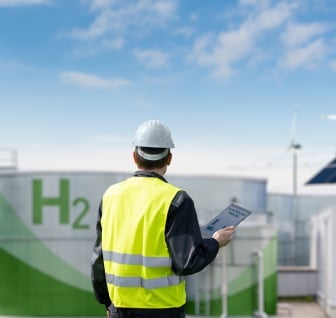As the world grapples with the urgent need to address climate change, a rapid cleaner energy transition toward renewable sources is being implemented across the globe. Let’s weigh the benefits against the obstacles of moving towards a cleaner, more sustainable energy future.
The world is facing the critical challenge of transitioning to a low-carbon economy to address climate change and promote sustainable development. One approach gaining momentum is the rapid energy transition, which involves a shift away from fossil fuels to renewable energy sources, such as wind and solar power, within a relatively short time frame.
Rapid Energy Transition
This scenario requires significant investments in renewable energy infrastructure, as well as changes in policies and regulations to support the transition. Rapid energy transition scenarios depend on a variety of factors, including political, economic, and technological considerations, as well as societal attitudes and preferences toward energy production and consumption.
In a recent conversation with Dr. Akhlaqur Rahman, a member of IEEE and Engineers Australia as well as an Engineering Institute of Technology (EIT) lecturer said, “The need for energy transition arises from the shift to renewable and sustainable energy sources, driven by factors such as reduced emissions, independence from fossil fuels, and improved public health and safety awareness.”
The Paris Agreement, an international treaty on climate change, aims to limit global warming to well below 2 degrees Celsius and emphasizes the need for global cooperation in reducing greenhouse gas emissions and transitioning to a low-carbon economy.
In a white paper published by the World Economic Forum titled, “The Speed of the Energy Transition”, it states, “As a rule, these scenarios seek to achieve the goals of the Paris Agreement and imply that the energy sector is about to be disrupted.”
Rapid transition advocates argue that solar and wind are already cheaper than fossil fuels for generating electricity and that electric vehicles (EVs) are about to challenge internal combustion engines (ICEs) on price. They anticipate the rise of new technologies, such as green hydrogen, to lead to further waves of change.
Rapid transition advocates also point to the continued and unexpected fall in renewable costs, the continued S curves of new energy technology growth, and the rising pressure from financial markets and society for policymakers to take more assertive action.
In a column published by Reuters, “The Ironic Side Effects of the Rapid Global Energy Transition” it says, “There’s a consensus among some climate advocates that catastrophic global environmental damage can only be avoided by a rapid and comprehensive retooling of the world’s energy system and tough caps on emissions for industry.”
Pros of rapid energy transition
A rapid energy transition towards renewable sources has several advantages that can benefit both the environment and the economy.
- A significant reduction in carbon emissions, leading to a cleaner and healthier environment.
- Cost-saving benefits in the long term, with lower operational costs compared to traditional fossil fuels.
- Job creation in sectors such as solar panel manufacturing, wind turbine installation, and maintenance.
- Increased energy security by reducing dependence on imported fossil fuels, thereby reducing vulnerability to changes in global fuel prices and supply chain disruptions.


Cons of rapid energy transition
While there are several benefits of a rapid energy transition towards renewable energy sources, there are also potential drawbacks to consider.
• The high upfront costs of developing and deploying renewable energy infrastructure can be a major challenge for many countries and businesses.
• Existing infrastructure designed to operate on traditional fossil fuels, such as oil, gas, and coal, may need to be upgraded or replaced, which requires significant investment.
• Renewable energy sources, such as solar and wind power, are intermittent and dependent on weather conditions, making it challenging to maintain a reliable and consistent energy supply, especially during peak demand periods.
- Although renewable energy sources produce fewer greenhouse gas emissions than traditional fossil fuels, they can still have environmental impacts, such as large-scale solar and wind projects affecting local ecosystems and wildlife.
- Transitioning away from traditional fossil fuel industries may result in job losses, which can have negative social and economic impacts in regions where these industries are a significant source of employment.
EIT provides various courses in renewable energy to help professionals advance their knowledge and skills in this critical area.
On-Campus - Bachelor of Science (Civil and Structural Engineering)
Upon completion of this program, you will gain skills and…Read moreOn-Campus - Bachelor of Science (Mechanical Engineering)
This practical qualification will ensure you graduate job-ready as a…Read moreOn-Campus - Bachelor of Science (Electrical Engineering)
Practical qualification will ensure you graduate job-ready as an electrical…Read moreOn-Campus - Bachelor of Science (Industrial Automation Engineering)
Graduate job-ready as an industrial automation engineering technologist in many…Read moreProfessional Certificate of Competency in Green Smelting Technologies
This course is designed for engineers and professionals aiming to…Read moreProfessional Certificate of Competency in Carbon Capture
In this course, students will discover how CCS technology captures…Read moreProfessional Certificate of Competency in Fundamentals of Green Hydrogen Technology
In this course, students will learn about the fundamentals of…Read moreProfessional Certificate of Competency of Energy Storage
This course focuses on different types of energy storage technologies,…Read more
Rapid energy transition in action
Renewable power growth is expected to increase in China, the United States, and India over the next five years due to their policies, regulatory and market reforms to tackle the energy crisis. China is projected to contribute nearly half of the world’s new renewable power capacity additions between 2022 and 2027, following the implementation of its 14th Five-Year Plan.
France, Denmark, Spain, Hungary, and Luxemburg have set their targets for 2050. Japan, Korea, Canada, and New Zealand have passed laws committing to achieving net zero by 2050 while Ireland, Chile, and Fiji have proposed legislation.
Additionally, some advocates for rapid energy transition include nuclear energy as a part of the solution. Nuclear energy is a low-carbon energy source that has been used for decades to generate electricity. It does not produce greenhouse gas emissions during operation, making it an attractive option for reducing carbon emissions.
However, nuclear energy has its own set of challenges, including the potential for accidents and the management of radioactive waste. Despite these challenges, some countries are investing in next-generation nuclear technologies, such as small modular reactors, that could provide a more sustainable and safe form of nuclear energy.
Countries that are implementing nuclear energy
| USA | Spain |
| China | Sweden |
| France | Belgium |
| Russia | UK |
| South Korea | India |
| Canada | Czech Republic |
| Ukraine | Germany |
The transition towards renewable energy sources is a complex process that involves both benefits and challenges. While the benefits of a rapid energy transition include a cleaner environment, cost savings, job creation, energy security, and improved public health, the challenges of high upfront costs, intermittent energy supply, and potential job losses cannot be overlooked.
Despite these obstacles, the urgent need to address climate change calls for bold and decisive action towards a more sustainable energy future. As Rainer Baake, State Secretary in the Economy Ministry of Germany, said, “The energy transition is possible, and it is affordable.” The transition to a low-carbon economy may be challenging, but it is also essential for our collective future.
REFERENCES
How Can Asia Achieve a Clean Energy Transition? Examples from 5 Countries
Global Energy Transitions Stocktake










